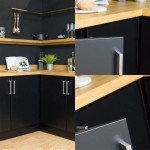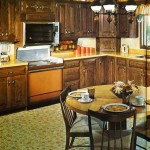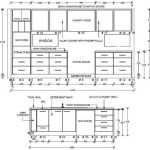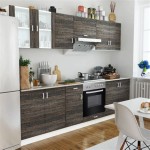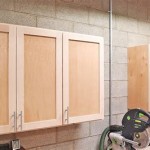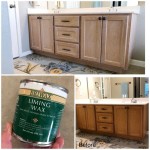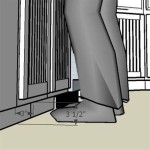```html
Aluminum Kitchen Cabinet Pros and Cons
Aluminum kitchen cabinets have emerged as a contemporary alternative to traditional wood or laminate cabinetry. Characterized by their sleek appearance, durability, and resistance to various environmental factors, they present a unique set of advantages and disadvantages that potential buyers should carefully consider. This article examines the pros and cons of aluminum kitchen cabinets to facilitate informed decision-making.
Durability and Resistance
One of the primary advantages of aluminum kitchen cabinets lies in their exceptional durability. Aluminum is inherently resistant to rust, corrosion, and moisture damage, making it an ideal choice for kitchens, which are often exposed to humidity and spills. Unlike wood, aluminum does not warp, crack, or rot when exposed to water. This characteristic extends the lifespan of the cabinets and reduces the need for frequent repairs or replacements.
The resistance to corrosion also makes aluminum cabinets suitable for coastal areas or environments with high salt content in the air. Wooden cabinets in such locations are prone to deterioration, requiring specialized treatments and maintenance. Aluminum, however, remains unaffected by these conditions, offering a long-lasting and cost-effective solution.
Furthermore, aluminum is inherently fire-resistant. While not entirely fireproof, it will not easily ignite or contribute to the spread of flames. This provides an added layer of safety in the kitchen environment. In contrast, wooden cabinets can act as fuel, escalating the severity of a fire.
Another aspect of durability lies in aluminum’s resistance to pests. Unlike wood, aluminum is not susceptible to termite infestations or damage from other wood-boring insects. This eliminates the need for pest control measures and ensures the long-term structural integrity of the cabinets.
The strength and stability of aluminum also contribute to its durability. It can withstand significant weight and pressure without bending or breaking. This is particularly important for kitchen cabinets, which are often required to support heavy appliances or countertops.
Design and Aesthetics
Aluminum kitchen cabinets offer a modern and minimalist aesthetic that appeals to many homeowners. The clean lines and smooth surfaces create a streamlined and contemporary look. Aluminum can be easily powder-coated in a wide range of colors, allowing for customization to match various kitchen designs and color schemes.
The ability to achieve a sleek and seamless appearance is another design advantage of aluminum. The material can be fabricated with precise tolerances, resulting in tight joints and minimal gaps. This contributes to a polished and professional finish.
Aluminum cabinets can be combined with other materials, such as glass or stainless steel, to create visually interesting and dynamic designs. Glass doors can showcase dishware and accents, while stainless steel hardware can complement the overall modern aesthetic.
The reflective properties of aluminum can also enhance the brightness and spaciousness of the kitchen. Light bounces off the smooth surfaces, creating a more open and airy feel. This is particularly beneficial in smaller kitchens or those with limited natural light.
While aluminum offers a variety of design possibilities, it is important to note that it may not suit all architectural styles. Its modern aesthetic may clash with traditional or rustic designs. Homeowners should carefully consider the overall style of their home before opting for aluminum kitchen cabinets.
Maintenance and Cleaning
Aluminum kitchen cabinets are relatively easy to maintain and clean. The smooth, non-porous surface resists staining and can be easily wiped clean with a damp cloth. Unlike wood, aluminum does not require special polishes or treatments to maintain its appearance.
The powder-coated finish provides an additional layer of protection against scratches and scuffs. It is also resistant to fading, ensuring that the cabinets retain their color and luster over time. This reduces the need for repainting or refinishing.
Grease and food splatters can be easily removed from aluminum cabinets with a mild detergent. The non-porous surface prevents these substances from penetrating the material, making cleaning quick and efficient.
The ease of maintenance contributes to the long-term cost-effectiveness of aluminum kitchen cabinets. By reducing the need for specialized cleaning products and maintenance procedures, homeowners can save time and money over the lifespan of the cabinets.
However, it is important to avoid using abrasive cleaners or scouring pads on aluminum cabinets, as these can scratch or damage the finish. Gentle cleaning methods are generally sufficient to maintain their appearance.
Cost Considerations
The initial cost of aluminum kitchen cabinets can be higher than that of some traditional wood or laminate options. Aluminum is a more expensive material, and the fabrication process can also be more complex, contributing to the overall price. However, it's essential to also analyze the lifetime cost of the product. While the upfront price might be higher, the long-term durability and low maintenance requirements of aluminum can often offset the initial investment.
The cost of powder-coating or other finishes can also add to the overall expense. These finishes provide protection and enhance the aesthetic appeal of the cabinets, but they also contribute to the manufacturing costs.
The complexity of the design and installation can also impact the price. Custom designs or intricate installations may require specialized labor, increasing the overall cost. However, the increased customization offered by aluminum can provide homeowners with very specific features and designs.
However, it's essential to compare the price and value of aluminum cabinets with other options, considering the long-term benefits of durability and low maintenance. When comparing prices, consider features like soft-close hinges and drawer slides, which may add to the initial cost but provide long-term reliability.
Environmental Impact
Aluminum is a highly recyclable material, making it an environmentally friendly choice for kitchen cabinets. Recycled aluminum can be used to produce new cabinets without significant loss of quality or performance. This reduces the demand for virgin aluminum and minimizes the environmental impact associated with mining and processing.
The durability of aluminum cabinets also contributes to their environmental sustainability. By lasting longer and requiring fewer replacements, they reduce the amount of waste generated over time. This is in contrast to less durable materials that may need to be replaced more frequently.
However, the production of aluminum can be energy-intensive. The smelting process requires significant amounts of electricity, which can contribute to greenhouse gas emissions if the electricity is generated from fossil fuels. Therefore, it is important to consider the source of the aluminum and the manufacturing processes involved.
Some manufacturers are adopting more sustainable practices, such as using recycled aluminum and employing energy-efficient manufacturing processes. Consumers can support these efforts by choosing cabinets from companies that prioritize environmental responsibility.
Potential Drawbacks
While aluminum offers numerous advantages, there are also some potential drawbacks to consider. One of the main concerns is the possibility of dents and scratches. Although aluminum is durable, it is relatively soft compared to some other materials. Impact can cause dents, and abrasive materials can scratch the surface.
The thermal conductivity of aluminum can also be a disadvantage. Aluminum can become hot to the touch in direct sunlight or near heat sources. This can be a concern for those who frequently use their kitchen or who live in hot climates.
The acoustic properties of aluminum can also be a consideration. Aluminum cabinets can sometimes create a hollow or metallic sound when doors or drawers are closed. This can be mitigated by using sound-dampening materials or softer closing mechanisms.
The visual appeal of aluminum is subjective. Some homeowners may find the modern aesthetic too sterile or industrial. Aluminum cabinets may not be the best choice for those seeking a warmer or more traditional kitchen design.
```
Aluminum Kitchen Cabinet Pros Cons A Star Furnishing

Why Aluminium Kitchen Cabinet Perfect For Malaysian

Aluminum Kitchen Cabinet Pros Cons A Star Furnishing

Aluminum Kitchen Cabinet Pros Cons A Star Furnishing

Aluminum Kitchen Cabinet Pros Cons A Star Furnishing

Aluminum Kitchen Cabinet 5 Advantages And Disadvantages

Aluminium Kitchen Cabinets Pros Cons And More Recommend My

5 Pros Cons Of Aluminium Kitchen Cabinet

Aluminum Kitchen Cabinet Pros Cons A Star Furnishing

Aluminum Kitchen Cabinet 5 Advantages And Disadvantages
Related Posts

